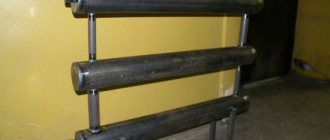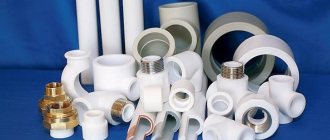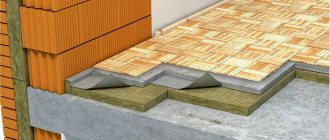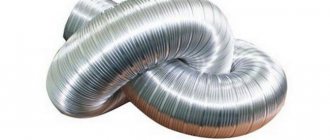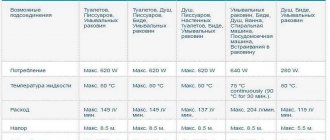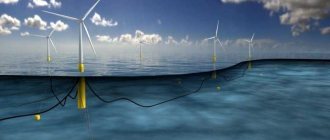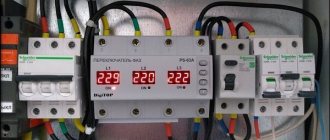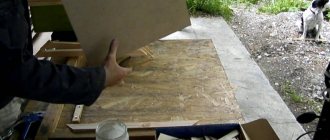There are fewer and fewer traditional energy sources in the world. Oil, gas, and coal reserves are being depleted and everything is heading towards the fact that sooner or later they will run out. If alternative energy sources are not found by this time, then humanity will face a catastrophe. Therefore, research is being conducted in all developed countries to discover and develop new energy sources. First of all, it is solar energy. Since ancient times, this energy has been used by people to illuminate their homes, dry food, clothes, etc. Solar energy today is one of the most promising sources of alternative energy. Currently, there are already quite a lot of designs that allow converting solar energy into electrical or thermal energy. The industry is gradually growing and developing, but, like everywhere else, it has its problems. All this will be discussed in this material.
Distribution in Russia
Solar energy is becoming increasingly widespread in different countries and on different continents. Russia is no exception to this trend. The reason for its wider distribution in recent years is:
- Development of new technologies, which reduced the cost of equipment;
- People's desire to have an independent source of energy;
- Clean energy production (“green energy”);
- Renewable energy source.
The southern regions of our country - the Caucasus republics, Krasnodar and Stavropol territories, the southern regions of Siberia and the Far East - have potential for the development of solar energy. Regions differ in insolation during the day and time of year, so for different regions the flux of solar radiation in summer is:
As of the beginning of 2021, the capacity of operating solar power plants in Russia is 0.03% of the power plant capacity of our country’s energy system. In numbers, this amounts to 75.2 MW.
Solar panels - alternative energy
A source of electrical energy independent of third-party resources is a solar battery. For its functioning, only the light of the central star of our planetary system is needed. The installations are used everywhere and are rapidly gaining popularity, competing with central power lines. A set of solar panels for private use can be purchased assembled and use the energy of the luminary according to your needs.
A Necessary Alternative
Solar panels were originally intended as an alternative source of electricity to supply areas where there is no power line or the supply of the resource is not constant and depends on a number of factors. This is how batteries are actively used:
- In remote and non-electrified regions with sufficient insolation;
- In apartment buildings, social institutions and enterprises as a backup source of power supply;
- In rural areas, solar power complements the off-grid power supply;
- Solar energy is sometimes used as a means of heating water in heating and water supply systems;
- Space stations run on converted solar energy.
The resulting electricity is spent on necessary needs: lighting, operation of household appliances and production equipment, supply of boiler plants.
The scope of application of solar energy processing systems today is extensive for several reasons:
- The kit includes a battery that stores energy; it can be used during the “dark” period or during a shutdown of the main central network.
- There is no need for third-party resources, the system provides for itself. When used by several subscribers, it quickly pays for itself in terms of payment for the services of electricity supply organizations.
- Independence from external factors, except weather conditions. Solar panels will be really useful in regions where the sun does hit the Earth's surface.
- Long-term performance – with proper care and timely maintenance up to 20 years.
The kits are installed on separate stands or on the roof of the house on the sunny side.
Solar panel systems, due to demand and competition in the industry, have dropped significantly in price over the past decade. When purchasing a complex for a private house, in which a family of 4 people will use electricity, you can recoup the costs in 3.5-4 years.
Types of converters and their efficiency
Any solar panel converts light from the Sun through an inverter - a key component of the system. It modifies the energy into direct current, which is transformed by the module into alternating current with a standard voltage of 220 V, necessary for the operation of most devices.
The power of inverters varies between 250...8000 W, which must be taken into account when choosing. The greater the maximum voltage load in the circuit, the more powerful the converter must be.
The most popular voltage and power ratios for private households and residential buildings:
- 12 V and 600 W;
- 24 V and 600…1500 W;
- 48 V and ≥1500 W.
According to the organization of work, converters are divided into several types:
- Autonomous ones work within a single circuit without extraneous resources. Their performance must be calculated for the maximum load on the circuit and taken with a small margin for the possibility of a voltage surge due to the inclusion of consumer equipment.
- Synchronous ones generate energy, accumulate it, and send it above the norm to the electrified network. The detected deficiency in the capacitor (battery) is compensated by the reverse intake from the network by the converter. Such a system helps prevent interruptions in the central system and is used as a reserve.
- Combined systems combine the functions of an autonomous and synchronous converter.
The converter, complete with solar panels for the home, creates qualitatively different voltage signals at the output, on which the cost of the device depends:
- Sinusoidal, the most expensive, generate high-quality current for connecting large household appliances - air conditioners, refrigerators, boilers;
- Rectangular ones are used to power small devices, such as lighting and other compatible devices. The cost of such a converter is relatively low;
- Pseudo-sinusoidal is the middle ground between rectangular and sinusoidal systems in both quality and price. You can connect any household appliance to this, but the transmission quality is much lower than that of the first option.
By type of work:
- Photovoltaic (semiconductor) converters (PVCs), transforming solar energy directly into electrical energy. Several combined solar cells are a solar battery.
- Solar power plants (SPS) are installations that operate on highly concentrated radiation to activate heat engines and industrial installations.
- Solar collectors (SC) are low-temperature heating units.
How to choose a solar battery
If it is necessary to use an autonomous source of electricity, first of all it is necessary to calculate the expected load on the network and determine the power of the installation. Fortunately, manufacturers offer ready-made systems with solar panels included, and it is enough to determine only a few basic parameters:
- Power and size of panels;
- Installation performance;
- Battery requirements for insolation and temperature conditions.
Types of ready-made modules:
- Monocrystalline from silicone converter cells. They are compact and highly efficient - up to 22%, corresponding to the highest cost.
- Polycrystalline with a silicon component as part of the working sections. Their efficiency does not exceed 18%, which is not much less than that of monocrystalline modules, but the cost is significantly lower, which is why such solar panels are chosen for summer cottages and private homes.
- Amorphous with thin-film silicon photocells are the lowest efficient and at the same time cheapest. But they have a distinctive feature - the ability to generate electricity with low insolation.
Any panels are completed into a finished system, accompanied by the following equipment:
- Inverter (converter), transforming light into electricity;
- A battery that stores energy and also levels out voltage surges;
- Controller for battery voltage, charging and other parameters.
You can complete the complex yourself or purchase it as an assembly, where the equipment is selected correctly taking into account the power characteristics of each component.
Installation of the complex should be trusted to professionals - the panels must be installed carefully using special fasteners.
Mini hydroelectric power plants
Homemade hydroelectric power plants are additional DIY alternative energy sources that can be built near a stream or reservoir with a dam. The basis of this design is a wheel that rotates with water flows, and the power of the installation depends on the flow speed.
How to make a design yourself?
To implement this plan you will need the following materials:
- car wheel;
- generator;
- cutting corners and metal;
- plywood;
- copper wire;
- neodymium magnets;
- polystyrene resin.
The wheel is made of 11-inch rims. The steel pipe is cut into four parts vertically, the resulting segments are used to make blades; 16 of them will be required. The blades are attached by welding, and the discs are secured with bolts.
The dimensions of the nozzle correspond to the width of the wheel; it is made from scrap metal. Having given the appropriate shape, the edges are connected by welding. The nozzle must be adjusted in height to regulate the water flow.
Next, the axle is welded and the wheel is installed on it. A generator is made, which is protected by a metal wing from splashes. All elements are coated with paint to protect against moisture and corrosion.
Such a device does not require huge capital investments, but it can significantly reduce energy costs.
Conclusion
Network solar power plants are not only environmentally friendly and reliable, but also a promising source of power supply for a private home. And even taking into account the initial investment, due to the increase in electricity tariffs, the payback period for the equipment may well be satisfactory.
Read more about the specifics of operation and optimal power of network solar power plants in the previous thematic article. Discussion of microgeneration in domestic realities is in the profile thread on the forum. In the video - how to make your house autonomous and not pay for electricity.
Subscribe to our Telegram channelExclusive posts every week
Conditions for work and efficiency improvement
It is better to entrust the calculation and installation of a solar system to professionals. Compliance with the installation technique will ensure operability and achievement of the declared performance. To improve efficiency and service life, it is necessary to take into account some nuances.
Thermostatic valve. In traditional heating systems, a thermostatic element is rarely installed, since the heat generator is responsible for regulating the temperature. However, when installing a solar system, one should not forget about the safety valve.
Heating the tank to the maximum permissible temperature increases the performance of the collector and allows you to use solar heat even in cloudy weather
The optimal placement of the valve is 60 cm from the heater. When placed close, the “thermostat” heats up and blocks the supply of hot water.
Placement of the storage tank. The DHW buffer tank must be installed in an accessible location. When placed in a compact room, special attention is paid to the height of the ceilings.
The minimum free space above the tank is 60 cm. This gap is necessary for servicing the battery and replacing the magnesium anode
Installation of expansion tank. The element compensates for thermal expansion during periods of stagnation. Installing the tank above the pumping equipment will cause overheating of the membrane and its premature wear.
The optimal place for the expansion tank is under the pump group. The temperature effect during this installation is significantly reduced, and the membrane retains its elasticity longer.
Solar circuit connection. When connecting pipes, it is recommended to organize a loop. The thermal loop reduces heat loss by preventing the release of heated liquid.
A technically correct option for implementing a “loop” of a solar circuit. Neglecting this requirement causes the temperature in the storage tank to drop by 1-2°C overnight
Check valve. Prevents “overturning” of coolant circulation. If there is a lack of solar activity, the check valve prevents the heat accumulated during the day from dissipating.
Development of non-traditional sources
Non-traditional energy sources include:
- energy of sun;
- wind energy;
- geothermal;
- energy of sea tides and waves;
- biomass;
- low-potential environmental energy.
Their development seems possible due to the ubiquity of most types; one can also note their environmental friendliness and the absence of operating costs for the fuel component.
However, there are also some negative qualities that prevent their use on a production scale. This is a low flux density, which forces the use of large-area “intercepting” installations, which also vary over time.
All this leads to the fact that such devices have high material consumption, which means that capital investments also increase. Well, the process of obtaining energy due to some element of randomness associated with weather conditions causes a lot of trouble.
Another major problem remains the “preservation” of this energy raw material, since existing electricity storage technologies do not allow this to be done in large quantities. However, in domestic conditions, alternative energy sources for the home are becoming increasingly popular, so let’s get acquainted with the main energy installations that can be installed in private ownership.
Optional equipment
In addition to current generators (wind generator or solar battery), you will need:
- Inverter - converts direct current generated by a solar panel or battery into 220 V alternating current.
- Rechargeable batteries (AB). They store a reserve of electricity in case of peak demand or for situations when the generator does not produce current (for example, solar panels at night).
- Charge controllers are devices responsible for directing the flow of electricity generated by the generator. Without them, the generator will have to be manually disconnected from the battery every night and at the end of each charge. In addition, controllers increase generator efficiency by 30–50%.
- Generator mounting. In the case of a wind generator, this is a mast 8–10 m high. For solar panels, these are brackets for installation on the roof or free-standing structures.
As practice shows, you will have to pay about the same amount for a set of equipment as for a generator.
Biogas plants
The gas is formed as a result of processing waste products of poultry and animals. Recycled waste is used to fertilize the soil in personal plots. The process is based on a fermentation reaction involving bacteria living in manure.
The best source of biogas is considered to be cattle manure, although waste from birds or other livestock is also suitable.
Fermentation occurs without access to oxygen, so it is advisable to use closed containers, which are also called bioreactors. The reaction is activated if the mass is periodically stirred; for this, manual labor or various electromechanical devices are used.
It will also be necessary to maintain the temperature in the installation from 30 to 50 degrees to ensure the activity of mesophilic and thermophilic bacteria and their participation in the reaction.
Manufacturing of the structure
The simplest biogas installation is a barrel with a stirrer, closed with a lid. Gas from the barrel enters the tank through a hose; a hole is made in the lid for this purpose. This design provides gas to one or two gas burners.
To obtain large volumes of gas, an above-ground or underground bunker is used, which is made of reinforced concrete. It is advisable to divide the entire container into several compartments so that the reaction occurs with a time shift.
The fermentation process with the participation of mesophilic cultures takes up to 30 days, so such conditions are optimal for uninterrupted gas release. Manure is loaded through the loading hopper, and waste raw materials are collected from the opposite side.
The container is not completely filled with the mass, about 20 percent; the remaining space serves to accumulate gas. Two tubes are connected to the lid of the container, one goes to the consumer, and the other to the water seal - a container filled with water. This ensures gas purification and drying, and high quality gas is supplied to the consumer.
